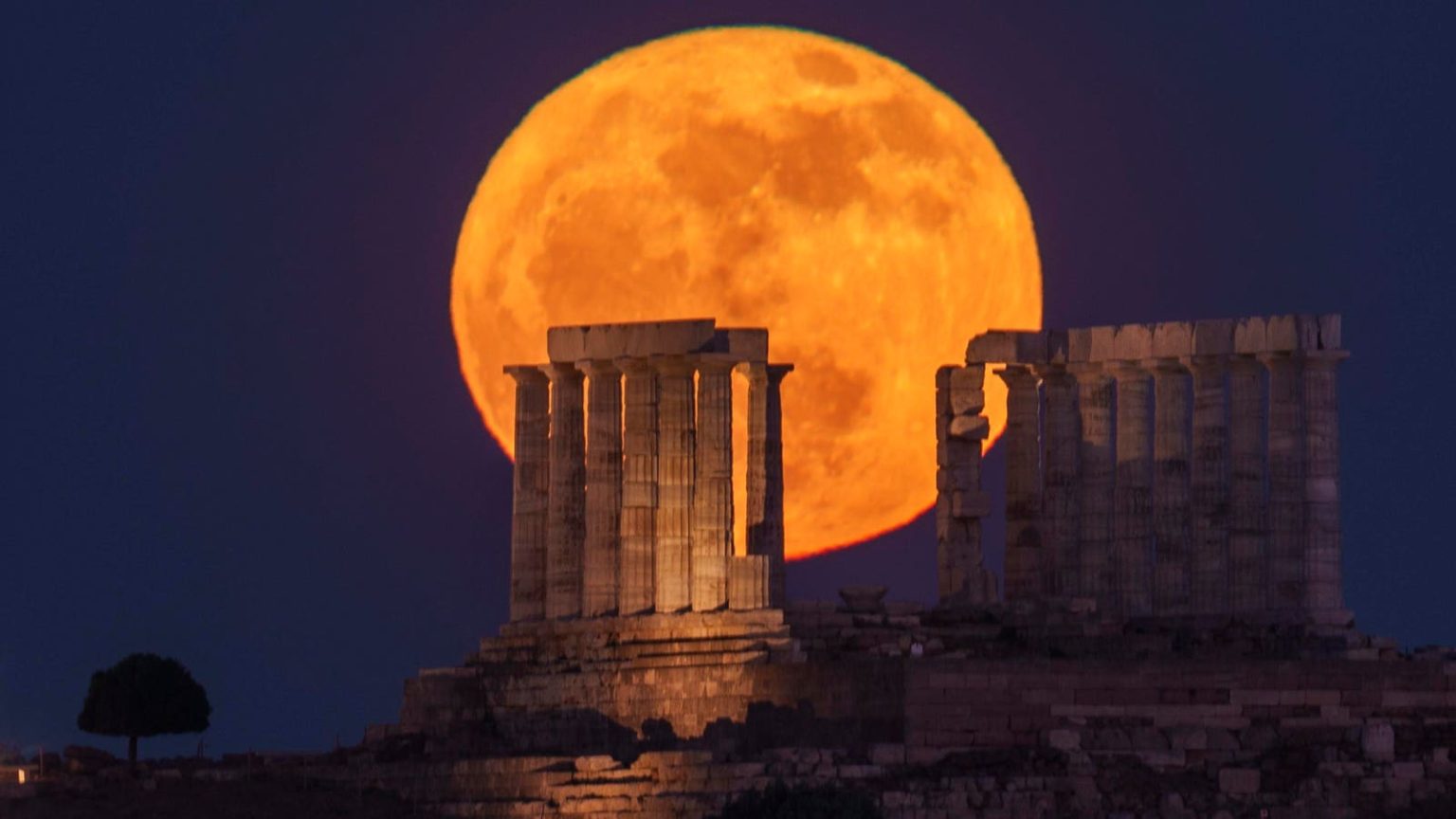The “Flower Moon” rose at dusk on Thursday, accompanied by the red supergiant star Antares in the constellation Scorpius. This full moon is also known as the “Milk Moon” and the “Hare Moon,” marking the fifth full moon of 2024 and the final one of the season. It illuminated the sky after sunset, rising in the east as the sun set in the west.
The full moon occurs when it is on the opposite side of the Earth from the sun, with its entire face illuminated by sunlight. It reached its full phase at 9:53 a.m. EDT on May 23 and was best seen at moonrise near that time. From the northern hemisphere, viewers were able to observe Antares to the lower left of the full moon as it ascended in the sky. In certain regions such as the eastern U.S., Mexico, the Caribbean, Central and northern South America, and west-central Africa, Antares was even occulted by the moon right before 10:00 p.m. EDT.
Antares is a red supergiant star, the fifteenth brightest in the night sky, with a mass 12 times that of the sun. Located about 550 light years away, it belongs to the Scorpius-Centaurus Association, a group of stars found in the constellations Scorpius and Crux. Known for its distinctive orangey-red color, Antares can often be mistaken for Mars due to its appearance and the close proximity during Mars’ biennial passes. Its name even means “rival to Ares,” with Ares being the Greek god of war and Mars his Roman counterpart.
With a 27.3-day orbital period, the moon completes a full rotation around Earth every month. However, it becomes full every 29.5 days due to Earth’s movement around the sun, resulting in a slightly longer gap between specific moon phases. During a full moon, the moon’s gravitational pull on Earth’s oceans is at its peak, leading to higher tides known as spring tides, occurring at both the full moon and the new moon phases. The upcoming full moon after the “Flower Moon” will be the “Strawberry Moon,” appearing on June 21 at 9:07 p.m. EDT, closely following the June solstice and marking the beginning of summer in the northern hemisphere.
In conclusion, the celestial display of the “Flower Moon” alongside Antares provided a stunning sight for skywatchers around the world. The unique characteristics of Antares, the moon’s orbital patterns, and the impact of the full moon on Earth’s tides all contribute to the fascinating astronomical events that captivate stargazers. Looking ahead to the “Strawberry Moon” in June, anticipation builds for another breathtaking lunar spectacle as the summer solstice approaches. Astronomy enthusiasts are encouraged to enjoy the beauty of the night sky and remain vigilant for future lunar events.


